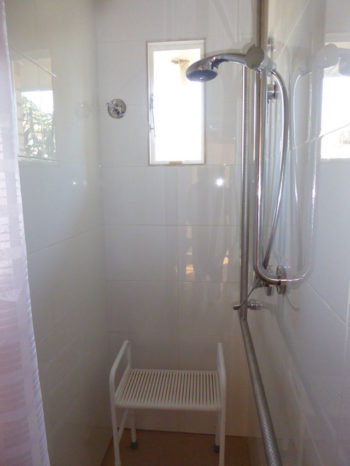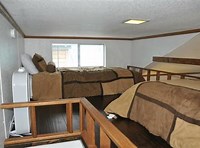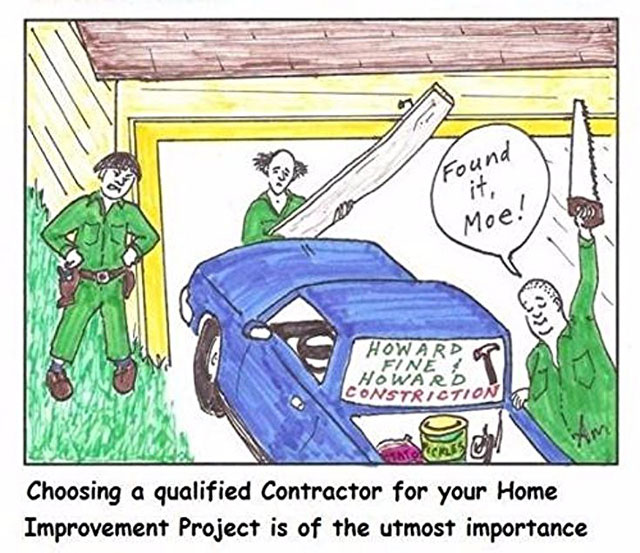data-elementor-type="post" data-elementor-id="816" class="elementor elementor-816" data-elementor-settings="[]">
This article covers the critical points you need to know when you are renovating your home. Why are they critical? They are critical as they can protect you from having a renovation disaster.
You might be renovating your home, and you are not sure if you are doing it right.
You might not need a building permit. So you will not have a building surveyor checking your drawings or inspect your home.
You could be organizing tradespeople and project managing your renovation. So how do you know that the tradesperson is building or renovating your home according to code?
In this article, I’ll be talking about what you need to know about Building Regulations. And how they apply when you are renovating your home.
I’ll also explain what a soil test is and if you need a soil test when renovating your home.
Now before you say to yourself, why do I have to know about Building Regulations? I’m hiring a builder to do my renovation work. They should know all about the building rules. Take a few minutes to watch Tom from Vancouver in the video below.
Tom is a building inspector, and in the video, he is inspecting a house under construction. And he does find a few unusual construction techniques on site.
Deprecated: Function get_magic_quotes_gpc() is deprecated in /home1/bparchitects/public_html/wp-includes/formatting.php on line 4826
Why You Have to Inspect Your Home During Construction
So don’t think this would only happen in Vancouver.
My father recently had a shower fit-out in his powder room for his house in Victoria, Australia. He did not need a building permit for his shower fit-out.
All the same, he did need a registered builder to do the work for his new shower room as the cost of the shower fit-out was more than $5,000. You can find out if you need permits when renovating your home in the article on ‘Permits for Your Renovation’.
For my father’s shower fit-out, I provided the drawings for the builder. And I specified diamond grip grab rails along with a shower rail and additional wall reinforcement. Once the builder had started work on the shower fit-out, I had to ask for the installation of the items specified. Otherwise, other products would have installed instead.
It is surprising what happens when it comes to constructing a house. The drawings for my father’s shower showed the installation of a stepless metal shower tray. The stepless shower tray makes the floor waterproof. Instead of the stepless shower tray, the builder decided to install moisture resistant particleboard.
Acceptable Resolution with the builder
Moisture resistant does not mean waterproof. And a shower has to be waterproof.
So to get my father’s shower finished by the builder, we agreed to keep the particleboard floor instead of the shower tray on the condition that the builder waterproofed the shower floor and installed a removable floor waste. The vinyl floor then ran into the removable waste and made the floor watertight.
In this particular case, an acceptable solution had to be worked out with the builder, rather than remove the shower floor and install the stepless metal shower tray. The shower floor had to be made waterproof.
If you leave the inspection to when the builder has completed the work, you will not know what is underneath the surface. Below is an image of my father’s shower. You wouldn’t know what is beneath the vinyl floor or the wall tiles.
You don’t know if waterproof wall linings are on the walls behind the tiles; if your walls are impervious to water.
You can find out more water-proofing a shower in my article on All You Need to Know About Permits for Your Renovation.

Will Your Builder Let You On to Your Home Site?
With the advent of the Occupational Health and Safety (OHS), you need a ‘red card’. The ‘red card’ is now known as the ‘White Card’.
Having either of these cards means that you have completed the basic OHS induction training for the construction industry. And you need to have one of these cards before going onto a Victorian construction site.
So your builder can stop you from coming on to your home site when renovating your home because you don’t hold a ‘White Card’.
Before you sign up with a builder to renovate your home, you want to check with the builder that they will let you come on to your home site during construction.
So that you can see the building of your home renovation; before the fixtures and finishes are all in place. And you don’t get locked out from your home site when the builder is renovating your home.

When Your Builder is Not a Builder
Now I want to talk about one of the worse things that can happen when you are renovating your home; when it turns out that your builder is not a builder.
One thing you need to be careful about is that if you hire a builder, they’re qualified to do the work. Same goes for tradespersons.
You may take for granted that the builder is a builder. Or the electrician is a qualified electrician.
Well, you might want to take some extra precautions when it comes to you selecting a builder for your renovation.
At least three people that I know have employed a ‘builder’ to do their home renovation only to find out that the person didn’t hold a builders license.
As the homeowner, you end up in a bad situation that can become a renovation disaster.
5 Steps to Find out If Your Builder Is a Registered Builder
How can a builder not be a builder? Well, as mentioned, the person who said that they were a builder was using someone else’s building license.
It can happen when a registered builder joins in partnership with a business partner. And the builder’s business partner is not a registered builder. And although the partner is not a registered builder, they use their partner’s building license.
There are 5 Steps you should do if you are thinking of using a builder for your home renovation. They are essential to you to reduce the risk of finding yourself in a disastrous home renovation situation.
You can check if a person is a registered builder on the Victorian Building Authority’s (VBA) website. You can find out if the builder is on the Find a Designated Building Practitioner page on the VBA website.
The Practitioner Disciplinary Register is also on the VBA website. The Register allows you to check if there has been any misconduct by that person.
And you can check if the builder can get domestic building insurance on the Victorian Managed Insurance Authority website.
However, you might not get any red flags coming up when you check these Registers and websites. There might not be any recorded issues associated with the builder.
The reason why you might not find any issues on these Registers is that you are checking the builder with the registered builder’s licence and not the business partner. And it might be the unregistered builder who is renovating your home .
So I recommend that you do all these checks to see if you can find anything that raises any questions.
Step 4. Google Search Builder's Name
And also, I suggest that you do a google search for the builder’s name. Not the building company’s name. See if there has been any bad review or comments, understanding that anyone can post a comment on the internet.
Step 5. Ask for Referral Contacts for Past Building Work and Ring Them
And I always say to my clients to get referrals from the builders they are considering using. And to ring the homeowner to find out how out about their home renovation. If there were any issues and if the homeowner is happy with the quality of the building work.
If there were any problems with the home owner’s renovation, did the builder come back and fix them.
What Can Go Wrong Renovating Your Home?
So it is worth your while to do your due diligence and check the credentials and the referrals for the builder you think you will use to renovate your home.
Do the 5 Steps as listed above, knowing that you have done everything at the time to reduce your risk to unwittingly using an unlicensed builder.
You could end up with a half-demolished house and a ‘builder’ that has disappeared – and then trying to find a builder that will step in and take over your project and someone else’s building work.
Not many builders will want to take on the responsibility for another builder’s work. To find out that they have to come back and rectify faulty work at a later stage.
Or you might move out of your home so that the builder can start work after they told you that the building permits were approved. Only to find out that they had not been approved and were months away from being approved.
The ‘builder’ could complete renovating your home. And you may have made the final payment for the building work. Then you find that there are lots of issues that need fixing. When you try and contact the ‘builder’ to come back to fix the problems you have with your home renovation, they are not available or helpful.
It then becomes a big problem for you to try and have the ‘builder’ rectify the faulty building work.
What Your Builder Must Do Before Renovating Your Home
The builder you choose to build your renovation must have domestic building insurance. This insurance applies for work more than $16,000 and covers you if the builder disappears or becomes insolvent.
Checking if your builder is eligible for domestic building insurance is the third Step in checking on the builder’s registration, as listed above.
You must get a ‘Certificate of Currency’ for this insurance from the builder. You should get this ‘Certificate of Currency’ before the builder takes a deposit and start work.
The builder has to be registered with the VBA to carry out work more than $10,000. Checking your builder registration with the VBA is the second Step in checking your builder’s record, as listed above.

There are exception’s to requiring registration, and this is for building work that involves only one of the following:
- Plastering
- Tiling (wall and floor)
- Glazing
- Insulating
- Painting
- Installing floor coverings attaching external fixtures (awnings, security screens, insect screens and balustrades)
- Building a chain wire fence around a tennis court
- Erecting a mast, pole, antenna, aerial or similar structure
There are special requirements for plumbers, gas-fitters, drainers and electricians.
Building Regulations When Renovating Your Home

The Building Regulations are there to make buildings safe. They stipulate the minimum requirements for construction so that your home is safe to use.
The Building Regulations include guidelines to carry out structural work safely. And advice on how to avoid potential damage to your home or your neighbours’ homes.
The Building Regulations exist so that building your home renovation is done the right way.
For example, if there is a vapour barrier under your slab. Installing this barrier is done the right way and, the material doesn’t have holes through it. And that the building material used for this barrier is fit for creating a vapour barrier.

Soil Tests Renovating Your Home
Each house will have a different type of soil types.
A soil test will tell you what sort of soil you have on your home site. You need a soil test if you are building a new addition to your home. Or if you have to replace some of your footings.
If you need a building permit, you have to provide the building surveyor with a soil test.
The engineer uses a soil test report to work out your house foundations. They use the information from the soil test to specify the right type of footing or slab reinforcement and strength for the foundations of your house.
There are four main soil types. They are:
- Sand /rock with no ground movement from moisture
- Clay
- Filled
- Soft
Also, within the clay soil types, there are four categories of clay. The clay soil types range from slightly reactive to extremely reactive clay.
What If You Don’t Need a Building Permit?
If you need a building permit, a building surveyor will check your documents. The building surveyor checks your drawings and reports to make sure that your renovation complies with the Building Regulations.
And if your documents comply with the building regulations and standards, the building surveyor will approve your building permit.
So how can you make your home comply with Building Regulations if you don’t need a building permit?
If you are renovating your home, you need to have the new building work follow the regulations. Your home renovation has to comply if you are doing the work yourself or if you have a builder do the work for you.

What Is the National Construction Code of Australia (NCC)?
The National Construction Code of Australia (NCC) covers the design and technical aspects of building, and plumbing.
The NCC for housing is 599 pages long. It includes acceptable levels for safety, health, amenity, accessibility and sustainability of houses for both technical design and construction requirements.
Different states of Australia have different requirements. So it is always worth checking with your local Council’s building surveyor if your home renovation needs particular requirements to meet compliance with the NCC.
The NCC covers the following in building houses:
- Structure
- Damp and weatherproofing
- Fire safety
- Health and amenity
- Safe movement and access
- Ancillary provisions and additional construction requirements
- Energy efficiency
And if the building is suitable and fit for the intended purpose
Such as, if the termite protection you used on your house is suitable and that the termite protection material is not eaten by termites.
The NCC includes the use of materials and products and forms of construction and design. So that your house is constructed using suitable materials.
It includes a section on fire resistance of building materials. You don’t want to renovate and find you have a fire hazard of a home.
And you don’t want to do something where there is no resistance to the spread of the fire, whether that be the spread of flames or smoke from the fire
House Structure When Renovating Your Home

The structure of your home needs to be stable so that it won’t collapse. And your house needs to stand up to the wind pressures, earthquake, ground movement, rainwater and the sun and the like.
And the building work that you do on your home needs to be structurally robust. You don’t want to remove any of the structural supports of your home, thinking that your roof will hold itself up.
Before you remove a wall, you need to look in the roof space and see if any posts or props are supporting the roof and sitting on top of this wall. If the wall is supporting the roof, it is a load bearing wall. And if you remove this wall, your roof will collapse.
Glass Safety Renovating Your Home
Your windows and glass doors need to be safe so that people will not walk into them. And if someone happens to run into your glass door, and the glass breaks, the person is not injured. Or better still, the glass is strong enough not to break on impact.
You can choose to have laminated glass which will hold together if the glass shatters. The plastic film between the glass panes will hold the broken glass together. It is the right choice of glass if you want to secure the front entry windows of your home.
Toughened glass is also known as tempered glass. It is a safety glass that has been treated to increase its strength. Large windows and sliding doors will have toughened glass.
Floods and Renovating Your Home
If your house is at risk of floods, your house structure has to stand up to the pressure from the flood waters.
Termites and Your Home
Every home, even if it is not in a termite designated area, should be designed with a termite management plan in place.
Protect Your Home from Water and Moisture Damage
That you won’t get any water or moisture entering your home from the exterior
That there will not be an accumulation of moisture from inside your home. Such as condensation or from your kitchen when cooking. And the wet rooms in your house, such as your bathroom and laundry, will not accumulate moisture.
That your stormwater doesn’t drain into your neighbour’s property.
And that your home has the right amount of weatherproofing and damp roof course. And you don’t have rising damp as this will lead to mould, and cause your timber house frame to rot. If there is heavy rain, that the stormwater drains from your house can drain water off your home site.
Your roof is the right design and is capable of getting rid of rain. There is weatherproofing around your windows and doors so that you don’t get water on the inside of your home.
Design Your Home as a Safe Place
You have the facilities to allow you to have sufficient personal hygiene. And if you happen to faint in your toilet someone can get in to help you by installing removable hinges on the toilet door.
You can use your laundry and your kitchen and move around your home safely.
And you have safe gradients on walking surfaces to your home and slip-resistant surfaces where required.
That your stairs have handrails and Landings. And you install barriers when there is a possibility that you could fall more than 1m.
Fire Safety Renovating Your Home

Your house exits are clear, and your home design allows you to get out of your home in case of fire. And you have smoke detectors that work.
That your home and home renovations don’t put your neighbour’s house at risk of spread of fire.
Room Heights and Renovating Your Home
That your room heights are adequate.

Lighting
You have adequate natural light and artificial lighting levels in your house.
Ventilation
That you have enough fresh air entering your home. Allowing for fresh air is particularly important as we make our homes more energy efficient and more airtight.
Noise
And that you won’t have problems with noise from adjoining homes.
Swimming Pools Are Safe
People are safeguarded from injury or drowning in your swimming pools with fencing, gates and barriers.
Protect Your Home from Bushfire
That your home design is detailed to the bushfire attack level appropriate for your location to protect your home from bushfires.
Energy Efficient Home
Different Regulations for Different States of Australia

Depending on where you are in Australia, your home can be in a different climate zone. And you can experience different wind conditions.
For example, Darwin will be a tropical climate and exposed to cyclonic winds, whereas Melbourne is a temperate climate. And houses, other buildings and the landscape may surround your home, protecting it from the wind.
So different climates require different types of house construction. So the Building Regulations do vary depending on the location of your house.
You can check what requirements you need for your home renovation with your Council’s building surveyor. Or have an architect work with you so that you have your home designed the right way for you.
What You Need to Know to Have a Fantastic Renovated Home
With a poor home design and an excellent builder to build it, you will still end up with a lousy renovation.
Likewise, a good design and an inadequate builder will end up with a lousy home renovation.
You want to have an excellent design for your home renovation and a good builder. You want the right team for your home renovation — the best design and an excellent builder to build your home. Then you will end up with a fantastic house that you will love, and your friends will envy.
Happy Renovating!
Bridget Puszka
Smartrenovators.com.au
Bridget Puszka designs beautiful, healthy, sustainable luxury homes. You can find out more about her architect designed Award-winning houses.
And learn what her clients have said about their homes in their testimonials.

